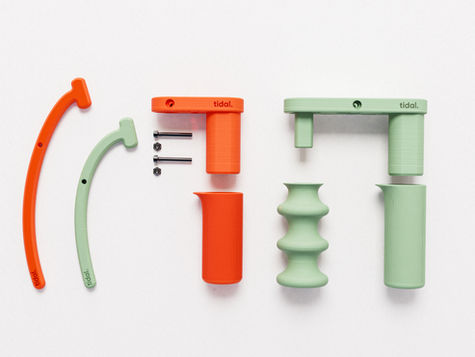APPLYING CO-DESIGN TO ASSISTIVE TECHNOLOGY
We are a multidisciplinary team of researchers attempting to revolutionise the way Assistive Technology (AT) is delivered.
Our aim is to develop a blueprint for a digital design and manufacturing clinical service that will streamline the co-design process and overcome barriers to AT use.


ABOUT US
OUR MISSION
Advancing Assistive Technology Through Co-Design
We are committed to enhancing the lives of people with disabilities by developing personalised Assistive Technology (AT). Our approach is rooted in user-centred co-design, ensuring that every solution is tailored to the unique needs of the individual.
Our work builds on PhD research by Dr. Jonathan Howard at Swansea Bay University Health Board, Wales, UK, now an Advanced Practitioner at The Children’s Trust, London. His research demonstrated that co-designing personalised AT within healthcare services leads to solutions that better fit the end-user, improving physical and emotional well-being and enabling greater independence. This work was carried out in collaboration with PDR at Cardiff Metropolitan University and partners across NHS Wales.
Scaling Co-Design in Healthcare
We are now focused on empowering healthcare professionals to co-create AT with the people who use it. Leveraging digital design and manufacturing technologies, including 3D CAD and 3D printing, we aim to make personalised AT more accessible and scalable.
Our Impact and Partnerships
Our projects have been supported by the Engineering & Physical Sciences Research Council (EPSRC) and Tidal N+. Watch our short project video [here] – this work earned a prestigious iF Design Award and a Red Dot Design Award
We also collaborate with industry. A recent Knowledge Transfer Partnership with V-Trak (a Permobil company) advanced the use of CAD and 3D printing for bespoke wheelchair seating, which also received an iF Design Award.
Join Us
We are actively developing new projects and partnerships in the field of Assistive Technology. If you share our vision for inclusive, user-driven design, we’d love to collaborate.

WHAT WE DO

Assistive Technology Design
Our team of experts collaborates with individuals with disabilities and healthcare professionals to co-design personalised assistive technology solutions that meet unique needs.

Digital Manufacturing
We use cutting-edge digital manufacturing technology to produce high-quality, personalised assistive technology solutions quickly and efficiently.

Clinical Services
Members of our team are Clinical Scientists who provide comprehensive support to individuals with disabilities, ensuring they receive the best possible care and assistance.

Research and Development
We are committed to ongoing research and development, continually improving our products and services to better meet the needs of individuals with disabilities.
OUR RESEARCH WORK
ASSISTIVE TECHNOLOGY GALLERY
Take a look at some of our recent work funded by the Tidal N+. Concepts have been illustrated through wireframes, storyboards, service blueprints, user journey maps, renderings, and animations. Find out more about our research methods in the Portfolio section.
RESEARCH PAPERS ON AT DESIGN
Aveyard, B., Dauncey, W., Redwood-Thomas, J., Eggbeer, D., Penman, R., & Tasker, L. (2025). Bridging the gap: from standards to reality in wheelchair headrest-backrest design: a case study. Disability and Rehabilitation: Assistive Technology, 1–10. https://doi.org/10.1080/17483107.2025.2532704
Howard, J., Cloke, S., Eggbeer, D., & Beverley, K. (2024). Discovering the barriers to scaling a co-design approach for the provision of custom assistive technology within healthcare services. Disability and Rehabilitation: Assistive Technology, 1–12. https://doi.org/10.1080/17483107.2024.2406443
Howard, J., Bowtell, M., Fisher, Z., Tasker, L. H., & Tree, J. (2023) Can a previously co-designed device be used by others? A service evaluation of the use of the Sativex spray holder for individuals with multiple sclerosis. Disability and rehabilitation: Assistive technology, DOI: 10.1080/17483107.2023.2228344
Kopanoglu, T., Beverley, K., Eggbeer, D., and Walters, A. (2022) Design for patient empowerment: Guidelines to design for supporting the self-management of people living with chronic conditions, in Lockton, D., Lenzi, S., Hekkert, P., Oak, A., Sádaba, J., Lloyd, P. (eds.), DRS2022: Bilbao, 25 June - 3 July, Bilbao, Spain. https://doi.org/10.21606/drs.2022.530
Howard, J., Tasker, L. H., Fisher, Z., & Tree, J. (2022). Assessing the use of co-design to produce bespoke assistive technology solutions within a current healthcare service: a service evaluation. Disability and rehabilitation. Assistive technology, 1–10. Advance online publication. https://doi.org/10.1080/17483107.2022.2060355
Howard, J., Fisher, Z., Kemp, A., Lindsay, S., Tasker, L. & Tree, J. (2020). Exploring the barriers to using assistive technology for individuals with chronic conditions: a metasynthesis review. Disability and Rehabilitation: Assistive technology, 1-19. 10.1080/17483107.2020.1788181
Howard, J., Eggbeer, D., Dorrington, P., Korkees, F., Tasker, L. (2020). Evaluating additive manufacturing for the production of custom head supports: A comparison against a commercial head support under static loading conditions. Proceedings of the Institution of Mechanical Engineers, Part H: Journal of Engineering in Medicine, 458-467.












